| 1 |
You're checking your vehicle's tyres before starting a long motorway journey. What check should be made on each tyre? |
|
| 2 |
What should you do if you notice that two wheel nuts are missing from one of the wheels on your vehicle? |
|
| 3 |
What would be illegal? |
|
| 4 |
In very cold weather, moisture can freeze in your vehicle's air storage tanks. What can you do to help prevent this from happening? |
|
| 5 |
What does this warning light on the instrument panel mean? |
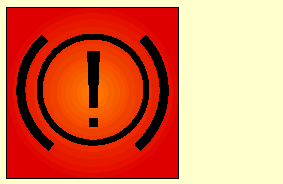
|
| 6 |
You're driving along a motorway. What should you do if the air-pressure warning device starts to operate? |
|
| 7 |
Your vehicle has broken down at night on a two-way road. How should you try to leave the vehicle? |
|
| 8 |
What should you do if your power-assisted steering fails suddenly? |
|
| 9 |
Your steering suddenly becomes heavy to turn. What could make this happen? |
|
| 10 |
What should you do if the brake pedal becomes hard to press? |
|
| 11 |
Why do air tanks on brake systems need to be drained? |
|
| 12 |
You're checking your vehicle. What should you do if you discover an air leak in the braking system? |
|
| 13 |
A loud buzzer sounds in your vehicle. What's this most likely to indicate? |
|
| 14 |
What proportion of the width of a tyre must have at least the legal minimum depth of tread? |
|
| 15 |
You discover that one of your rear brake-light bulbs has failed. How soon should it be replaced? |
|
| 16 |
What can you add to diesel fuel to prevent it from becoming less effective at low temperatures? |
|
| 17 |
You're about to start a long journey midway through the day. What should you do if you notice that the sidelights work but the headlights are faulty? |
|
| 18 |
Before starting a journey, you want to check your brake-system warning lights. What can you do when these aren't operated by the ignition switch? |
|
| 19 |
On motorways, you're usually driving at higher speeds for long distances. What effect can this have on your tyres? |
|
| 20 |
You notice that one of your tyres has a bulge in the side wall. What will happen if you drive the vehicle? |
|
| 21 |
What's the purpose of a preheating device? |
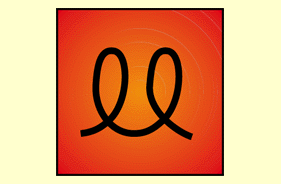
|
| 22 |
Where does a high-pressure fuel injector deliver fuel? |
|
| 23 |
Why is it important to avoid overfilling the engine with oil? |
|
| 24 |
Why should you use an approved coolant solution in your engine's cooling system? |
|
| 25 |
What's it advisable to do when you replace a tubeless tyre? |
|
| 26 |
When should you check the oil level in your engine? |
|
| 27 |
When should anti-freeze be used in the cooling system? |
|
| 28 |
What does this warning light on the instrument panel mean? |
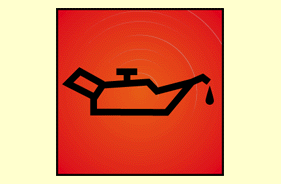
|
| 29 |
What does it mean if the ignition warning light comes on while you're driving? |
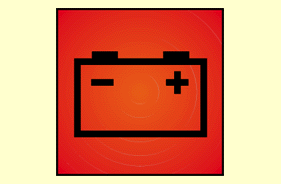
|
| 30 |
What do the codes shown on the side walls of bus and lorry tyres refer to? |
|
| 31 |
What will happen if you follow a regular vehicle maintenance schedule? |
|
| 32 |
What should you do before changing a wheel on your vehicle? |
|
| 33 |
You've had to change a wheel on your vehicle. When should the wheel nuts be checked again? |
|
| 34 |
How can vehicle breakdowns be reduced? |
|
| 35 |
Why should your engine oil be changed at the recommended intervals? |
|
| 36 |
Where should you park your vehicle before checking the engine oil level? |
|
| 37 |
What could happen if you overfill your engine with oil? |
|
| 38 |
You've stopped on a firm, level surface. What's the first thing you must do before you uncouple the trailer? |
|
| 39 |
When should you check the wheel nuts on your vehicle? |
|
| 40 |
What should you do if thick black smoke is coming from the exhaust of your vehicle? |
|
| 41 |
You hit the kerb at speed. What part of your vehicle should you check for damage? |
|
| 42 |
What's most likely to cause a burst tyre? |
|
| 43 |
When can 'selective' or 'block' gear changing be used? |
|
| 44 |
When would you use 'kickdown' on a vehicle that has automatic transmission? |
|
| 45 |
What's the most likely cause if your steering starts to feel heavy? |
|
| 46 |
Your vehicle suffers a tyre blow-out. How could this create a hazard for other road users? |
|
| 47 |
The Driver and Vehicle Standards Agency (DVSA) and the police carry out spot checks for faulty vehicles. What will happen to the vehicle if serious defects are found? |
|
| 48 |
At a Driver and Vehicle Standards Agency (DVSA) roadside check, your vehicle is found to have serious defects and you may no longer use it. Who will DVSA share this information with? |
|
| 49 |
What could happen if there isn't enough oil in your engine? |
|
| 50 |
While driving, your engine-oil warning light comes on. Why could it be dangerous to continue driving? |
|
| 51 |
Bus and lorry tyres have codes on their side walls. What do these codes refer to? |
|
| 52 |
What's the advantage of energy-saving tyres? |
|
| 53 |
A tyre has been replaced on your vehicle. What precautions should be taken when tightening the wheel nuts? |
|
| 54 |
Why are energy-saving tyres effective? |
|
| 55 |
Where can you get advice to help carry out minor repairs? |
|
| 56 |
Where can you get advice about carrying out repairs to your vehicle? |
|
| 57 |
What could happen if you overfill your engine with oil? |
|
| 58 |
What's the purpose of the oil filter? |
|
| 59 |
Which tool is essential for fitting a road wheel? |
|
| 60 |
What's the most likely reason for a diesel-engined vehicle running erratically in very cold weather? |
|
| 61 |
What do heated fuel lines prevent? |
|
| 62 |
Why should you carry out a daily walk-round check before setting off? |
|
| 63 |
What happens to diesel fuel when it gets hot? |
|
| 64 |
What must vehicle operators provide for their drivers? |
|
| 65 |
On your daily walk-round check, you see that one front tyre is more than 10 years old. What should you do before using the vehicle? |
|
| 66 |
How can you check the age of a tyre fitted to your vehicle? |
|
| 67 |
You're driving a three-axle double-deck bus. Why should you take extra care when using full steering lock? |
|
| 68 |
You're driving a three-axle double-deck bus and have the steering turned onto full lock. What should you do to avoid rear tyre scrub? |
|
| 69 |
You're driving a double-deck bus. What's the minimum depth of tread required over three-quarters of each tyre's width? |
|
| 70 |
What should you do if you notice that your coach's right rear indicator isn't working? |
|
| 71 |
Before each journey, you should check all warning lights. What should you do if a warning light remains lit? |
|
| 72 |
Why should you check your tyres more frequently on a coach with three axles? |
|
| 73 |
Some buses have different-sized wheels on the front and rear. What do you need to be aware of when driving at high speeds on long journeys? |
|
| 74 |
How frequently should a driver carry out a walk-round check? |
|
| 75 |
What should you do before stopping a turbocharged engine? |
|
| 76 |
A passenger tells you they've noticed that a wheel nut is missing from your bus. How often should you check your vehicle's wheel nuts? |
|
| 77 |
What should you do when you park a vehicle that's fitted with a turbocharger? |
|
| 78 |
You're driving at night on a very busy road when your headlights fail. What should you do if the fuse box is on the outside of the bus, on the right-hand side? |
|
| 79 |
Your coach often tows a trailer. How often should you check the trailer tyres for pressure? |
|
| 80 |
The bus you're driving is fitted with automatic transmission. When would you use kickdown? |
|
| 81 |
Your coach is fully laden. What's the most likely reason for the steering feeling heavy? |
|
| 82 |
Why are frequent tyre checks advisable on a tri-axle double-deck vehicle? |
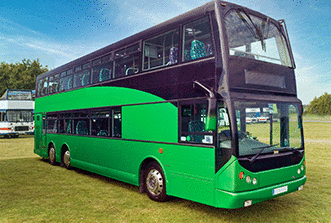
|
| 83 |
When should the driver of a coach wear gloves? |
|
| 84 |
You're driving a six-wheeled double-deck bus. What do you need to know about punctures on the rear tyres? |
|
| 85 |
What should you regularly check on the tyres of your bus? |
|
| 86 |
What will result from having over-inflated tyres? |
|
| 87 |
What should you do before uncoupling your trailer? |
|